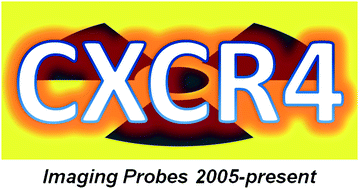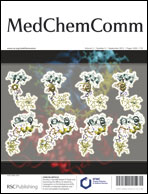Nuclear (PET/SPECT) and optical imaging probes targeting the CXCR4 chemokine receptor
Abstract
The chemokine receptor CXCR4 has been found to be highly expressed in a wide variety of cancer types, including breast, colorectal, melanoma, nasopharyngeal, oesophageal, osteosarcoma, and non-small-cell lung carcinoma. It has been shown that these elevated expression levels are yet further increased upon metastasis. This receptor therefore represents a highly attractive target which could facilitate the diagnostic imaging of many aggressive cancers. Since 2005, there have been a wide assortment of CXCR4-targeting imaging probes spanning both nuclear (PET/SPECT) and optical imaging modalities. This review highlights a wide variety of pertinent examples from the recent literature, placing special focus on the chemical aspects of probe design.


 Please wait while we load your content...
Please wait while we load your content...